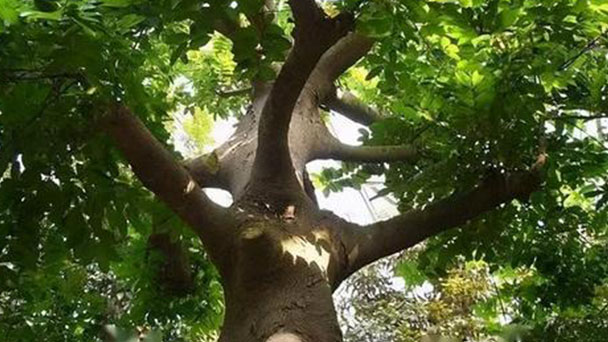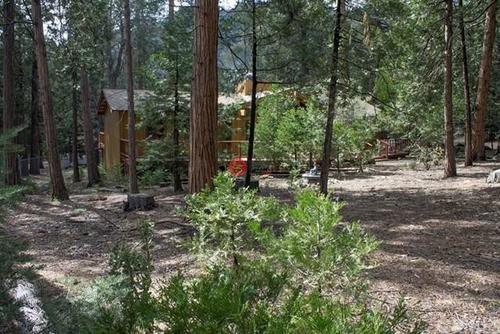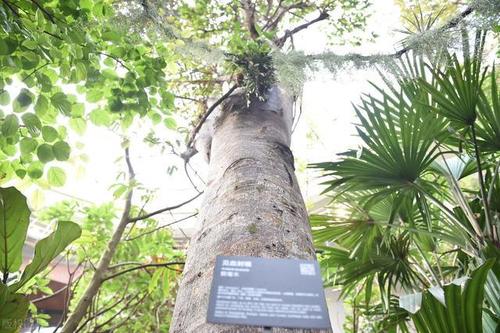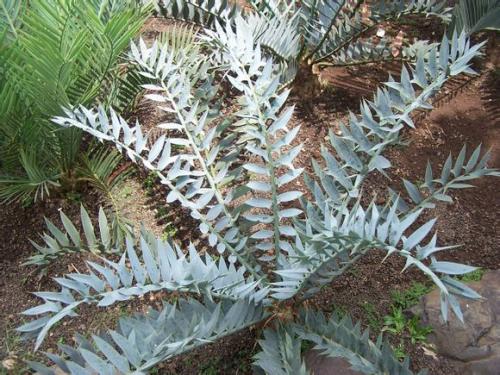African Fern Pine Tree (Afrocarpus Gracilior) Profile: Plant Info & Care Guide
Written by Maggie
Dec 06 2021

African Fern Pine (Afrocarpus gracilior) is one kind of the pine trees, up to 18 m, usually clip to keep low, leaves alternate, arranged in spiral shape, also divide male and female, which is greater than the seeds, mature red, and green seeds, like baldheaded of monk, dressed in a red robe. It is commonly found in southern China, including Hong Kong. The value of podocarpa is very high because it is used for ornamental purposes and its wood is used for construction, medicine and carving. This has led to a number of incidents in which Hong Kong's podocarpus trees have been illegally felled by migrants from the mainland.
African Fern Pine Picture

African Fern Pine Info
| Botanical Name | Afrocarpus gracilior or Podocarpus gracilior |
|
Common Name |
African Fern Pine, African fern pine Tree |
| Plant Type | Coniferous tree |
| Mature Size | 40–60 feet, 20–35 feet wide |
| Sun Exposure | Full sun (tolerates part shade) |
| Flower Color | Yellow |
| Hardiness Zones | 9–11 (USDA) |
| Native Area | East Africa |
African Fern Pine Morphological Characteristics
African Fern Pine Branch
African Fern Pine is an arbor with a height of 20 meters and a diameter of 60 centimeters at breast height; Bark is gray or grayish brown, shallow longitudinal split, flake off;Branches spreading or obliquely spreading, denser.
African Fern Pine Leaf
Leaves of African Fern Pine spirally spreading, striate-lanceolate, slightly curved, 7 -- 12 cm long and 7 -- 10 mm wide, apically acute, basally cuneate, dark green and glossy above, midrib conspicuously raised, white, grayish green or pale green below, midrib slightly raised.
African Fern Pine Flowers
Male globules of african fern pine are spicate, axillary, often in clusters of 3 -- 5 on very short peduncles, 3 -- 5 cm long, with several triangular bracts at base; Female coniferous leaf axils is solitary, pedunculate, with a few bracts at base.
African Fern Pine Seeds
The seed of african fern Pine are ovoid, diameter about 1 cm, apex round, when ripe fleshy pseudo sperm purple black, with white powder, seed receptacle fleshy cylindrical, red or purple red, stalk length 1-1.5 cm.
African Fern Pine Ecological Habits
African Fern Pine likes warm and humid climate, cold resistance is weak, North China pot ornamental; African Fern Pine has strong negative resistance; It likes sandy loam with good drainage and moisture. It has strong adaptability to soil and can survive in saline-alkali soil. African Fern Pine has strong resistance to sulfur dioxide, hydrogen sulfide, nitrogen oxide and other pollution gases; African Fern Pine has strong resistance to diseases and pests.
How to Grow and Care for African Fern Pine
African Fern Pine Light Requirements
African Fern Pines do excellent in direct morning daylight however they tolerate shady conditions. In warm climates, some color is preferable. They can be extremely touchy to direct southern or western publicity in the late day hours.
Soil for African Fern Pine
African Fern Pines are no longer fussy when it comes to soil. They tolerate terrible first-class and compacted soil. The desire is for barely acidic soil, however these bushes will additionally develop pretty nicely in impartial or even barely alkaline soil. Fern pines do no longer tolerate aerosol salt and must no longer be planted in areas that obtain spray or mist from the ocean.
African Fern Pine Watering
During the first two years, supply a fern pine a heavy watering every week. During the 0.33 year, minimize this to each different week. After that, water is based totally on the nearby environment. Fern pines will tolerate drought conditions, in particular when entirely mature, however will do higher when given ordinary water.
African Fern Pine Temperature & Humidity
The African Fern Pine originated in the mountains of Ethiopia, Kenya, and Uganda, so it favors a hotter climate, doing fine in USDA zones 9 via eleven Although it is cold-hardy to as low as 15 ranges Fahrenheit, it must be included from freezing temperatures.
African Fern Pine Fertilizer
Fertilize African Fern Pines in the springtime prior to new increase forming. Use an all-purpose fertilizer in accordance to the directions on the package.
Pruning African Fern Pine
Young African Fern Pine tree ought to be pruned to preserve a central chief and a wholesome department structure. Once established, pruning is now not needed, besides to attain the preferred measurement and shape. If espalier boom is desired, pruning to educate it has to start when the tree is very young. If grown as a hedge, hold the plant life uniformly sheared to the favored top and width. It is first-class to prune these plant life in late iciness or early spring earlier than a new boom has started.

Is African Fern Pine toxic?
Afrocarpus gracilior does not now make any reputable lists of poisonous plants, however, there are some on-line sources that insist it mildly poisonous. This opportunity has to be considered, as some other intently associated tree, Podocarpus macrophyllus (yew pine), is discovered on some lists as a plant that is mildly poisonous for people and particularly greater poisonous for pets.
Plants in the Podocarpus genus (to which the afrocarpus species as soon as belonged) can purpose diarrhea, enlarged pupil, seizures, tremors, and vomiting if any plant components are ingested in volume with the aid of pets and humans. (Ingestion is uncommon in humans, as the plant is no longer satisfactory to the taste). Yew pines and different Podocarpus species can have pretty extreme allergic reactions in some people; it is feasible the equal response will be skilled by using contact with fern pines.
African Fern Pine Propagation
African Fern Pine is commonly propagated by sowing and cutting. Sewing, in August after the seed is sown, about 10 days after germination. Cuttage, spring and autumn two seasons, choose dormant branches in spring, choose half lignified shoots in autumn, 12 ~ 15 cm, insert sand, soil each half of the seedbed, about 50 ~ 60 days to root.
African Fern Pine Disease & Pest Control
Disease control
Leaf spot and anthrax damage.
Method of prevention and cure
Spray with 50% methyl tobuzine WP 500 times liquid. Insects include scale insects, red spiders and large demoiselle moths, which can be sprayed with 1500 times 40% oxidized dimethoate emulsion.
Pest control
African Fern Pine diseases and insect pests occur less, but attention should be paid to the control of red spider in the hot and dry season in summer. The adult mites, nymphs mites and young mites gathered together to absorb juice from the veins and the edge of the leaf and the twigs of the leaves. The front of the injured leaves showed many pink green, and then turned gray and white spots, losing their inherent luster. In severe cases, the whole leaves were gray and white.
Method of prevention and cure
It is to be in red spider high hair period (5 ~ September) the insecticide that gush a few cure red spider is like Da mite spirit, thiaomarone, benzene buttin, every 10 days gush 1 time
African Fern Pine Distribution
African Fern Pine is produced in Jiangsu, Zhejiang, Fujian, Anhui, Jiangxi, Hunan, Sichuan, Yunnan, Guizhou, Guangxi, Guangdong and other provinces, in the south of the Yangtze River are cultivated. It is also found in Japan.
At present, the largest African Fern Pine base in China has settled in Baishitong Zhaobao in Nanchang, Jiangxi Province. It is the main rare tree species planting base of Fujian Zhaobao Ecological Farm in Nanchang, Jiangxi Province, covering an area of more than 2,000 acre with different postures and a value of billions of yuan. African Fern Pine is the largest podocarpus cultivation base in China.
African Fern Pine Uses
Medical Use
Root bark: sweet, lukewarm. Promote blood circulation, relieve pain, kill insects; External bruises, scabies.
Leaf: light, flat.Stop the bleeding.Used for coughing up or vomiting blood. Seeds, receptacle: Gan, Ping. Tonifying kidney and tonifying lung.Used for heart and stomach pain, blood deficiency and sallow complexion.
Economic Value
The material of African Fern Pine is fine and uniform, easy to process.It can be used as furniture, utensils, stationery and farm tools.
Although African Fern Pine is originally from China, due to historical reasons, the number of large podohan pine with sufficient age is very few, and the number of large size podohan pine greening seedlings is also very limited. As a slow growing tree species, African Fern Pine itself cannot be copied quickly, and the existing quantity is far from meeting the needs of garden greening and high-end residential landscape, especially the large size and beautiful shape of podocarpus is hard to find. As we have learned, the project seedling of above 10 cm diameter at breast on the market basically relies on import.
Guangdong, China to family consumption, it is understood that in Guangdong, families become the main force of consumption, the purchase proportion of about 30%, biased to choose high-end products, followed by the landscaping unit about 20%, enterprises and institutions accounted for about 20%, collectors accounted for about 15%, other uses about 15%.
The verve of the African Fern Pine is elegant and straight, with its own proud momentum of vigorous and vigorous. In addition, in accordance with the Chinese culture of "longevity" and "keeping good fortune" and other meanings, the owner who pursues high-grade courtyard beautification often likes to plant one or two podohan pine trees to create his own "garden style story" to add a masterstroke.

Latest Updated
- Benefits of Bugleweed - 7 Science-backed Health Benefits
- Bugleweed Dangers & Side Effects - Is It Poisonous?
- How to Plant Evergreen Trees - What You Should Know
- When to Plant Evergreens - Grow Guide for Evergreen Trees
- 12 Wonderful Evergreen Shrubs for Your Garden
- 12 Popular Evergreen Plants with Pictures for Beginners
- When And How To Prune A Lilac Bush Like a Pro
- How to Grow & Care for Lilac Vine (Hardenbergia Violacea)
- Japanese Lilac Tree (Syringa Reticulata) Care & Propagation Guide
- Shumard Oak Pros and Cons - What to Know
Popular Articles
- Winter maintenance of Antirrhinum Majus
- How to Grow Terminalia Mantaly Tree
- How to Grow and Care for Crossostephium Chinense
- How to grow Antirrhinum Majus in spring
- Peristeria Elata (Dove Orchid) Profile: Info & Care Guide
- Underwatered Snake Plant (Sansevieria Trifasciata) - Signs And How To Fix
- How to Care for Brazilian Jasmine Plant (Mandevilla Sanderi)
- How to Grow & Care for Graptopetalum Purple Delight in Summer
- Rosa Chinensis (China Rose): Plant Growing & Care Tips
- How to Care for Baby Sun Rose (Aptenia Cordifolia)